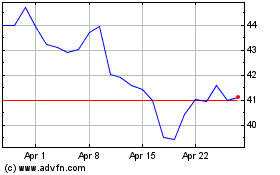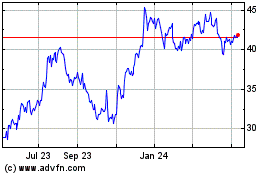Stress Tests: More Banks to Jog - Analyst Blog
June 13 2011 - 6:56AM
Zacks
The Federal Reserve requires more banks to submit their capital
plans annually to prove their financial ability to confront another
recession. The Federal Reserve will also hold the right to ban
capital deployment activities of unsuccessful banks.
This is part of Federal Reserve’s effort to closely monitor
capital ratios of banks and identify systematic risk in advance in
order to avoid recurrence of the latest federal bailout program.
According to a proposal on Friday, the Federal Reserve said that
it will extend its existing list of 19 big banks that are subject
to the capital assessment scheme to 35. The Fed expects the
proposal to be finalized later this year and the capital review for
these banks will be compulsory by 2012.
According to the ruling by the Federal Reserve, if these banks
want to increase their shareholder returns through dividend hikes,
they can resubmit their capital plans in between their annual
capital assessments.
The Federal Reserve perhaps wants to ensure that banks are more
cautious about dividend payments and share buybacks, particularly
after they had to shell out billions of dollars as government
reimbursement by tapping the capital market.
The Story Behind
In January, all 19 banks regulated by the Federal Reserve
including Bank of America Corp. (BAC),
JPMorgan Chase & Co. (JPM), Wells
Fargo & Company (WFC), The Goldman Sachs Group
Inc. (GS) and U.S. Bancorp (USB) faced a
rerun of the stress test. In the latest round, these banks were
required to demonstrate that they have adequate capital to address
losses over the next two years under any untoward situation.
The latest round of stress test was dissimilar in character to the
first round conducted during the middle of the recession in 2009,
which had estimate how much banks would lose if the economic
downturn proved even deeper than feared. The rerun was, on the
other hand, was basically a precautionary exercise amid economic
recovery.
Also, as the banking industry swung back to profitability in
2010, big banks began pressing regulators to allow them to enhance
shareholder value through dividends and buybacks.
Following the release of the second round of stress test results
in March, many big banks that were granted the green signal took
immediate action to raise their dividends.
New Banks Under Review
Banks with assets of $50 billion or more would be required to
submit capital plans. These banks, including M&T Bank
Corp. (MTB), Comerica Inc. (CMA) and
Northern Trust Corporation (NTRS), will be subject
to a capital surcharge in addition to meeting international capital
standards (such as Basel III).
A Cautionary Tale
Though one may think that restrictions on capital distribution will
make the shares of these banks unattractive for investors, the
decision to make them undergo stress tests once every year is
actually a good way keep another financial catastrophe away.
Surely, after learning a lesson from the latest recession,
Americans will never wish to go back to those dreadful days only to
earn higher capital rewards from their banks.
Hopefully, disciplined reruns of stress tests will also prevent
the big banks from flirting with risky activities that jeopardize
economic health. The annual stress tests would also play a major
role in abating threats to the economy by forcing banks strengthen
their capital levels.
Most importantly, the stress tests could ultimately translate to
less involvement of taxpayers’ money for bailing out troubled
financial institutions.
BANK OF AMER CP (BAC): Free Stock Analysis Report
COMERICA INC (CMA): Free Stock Analysis Report
GOLDMAN SACHS (GS): Free Stock Analysis Report
JPMORGAN CHASE (JPM): Free Stock Analysis Report
M&T BANK CORP (MTB): Free Stock Analysis Report
NORTHERN TRUST (NTRS): Free Stock Analysis Report
US BANCORP (USB): Free Stock Analysis Report
WELLS FARGO-NEW (WFC): Free Stock Analysis Report
Zacks Investment Research
US Bancorp (NYSE:USB)
Historical Stock Chart
From Jun 2024 to Jul 2024

US Bancorp (NYSE:USB)
Historical Stock Chart
From Jul 2023 to Jul 2024
